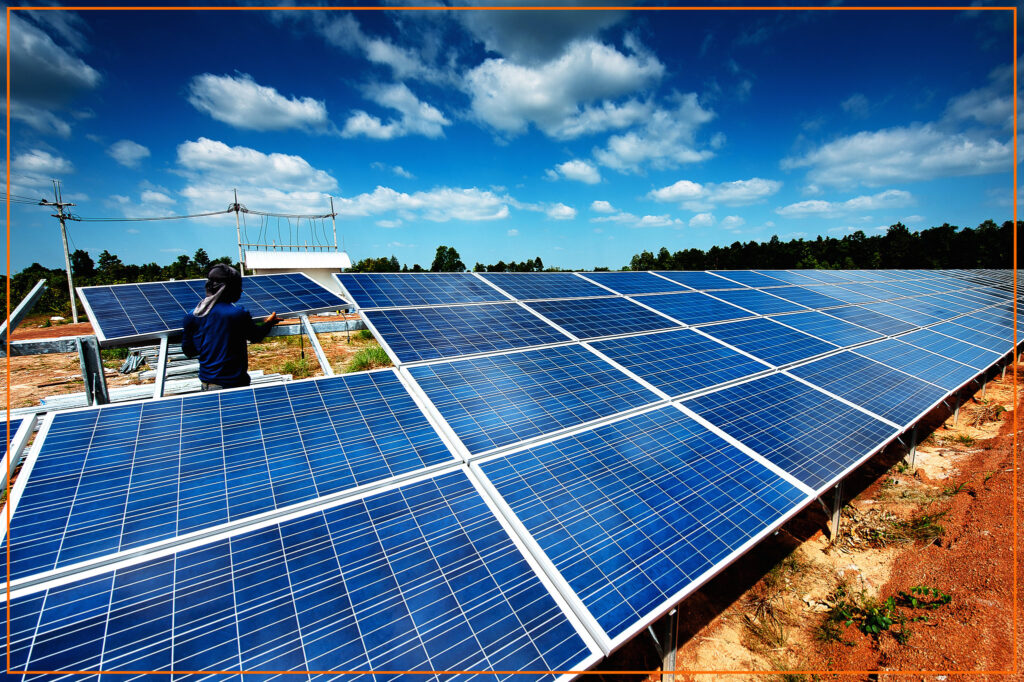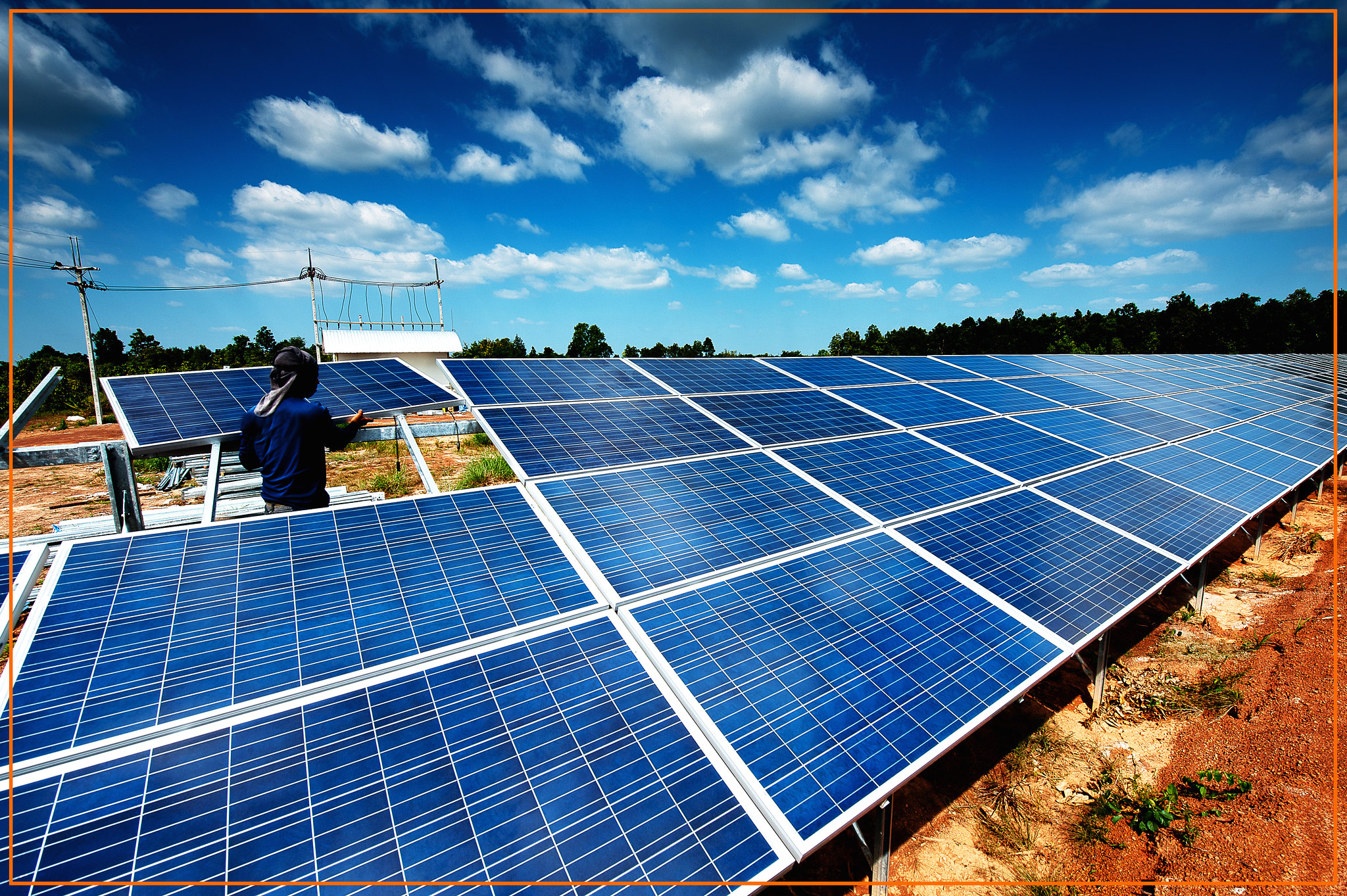How does solar PV work? PV cells are made of two layers of semi-conductor material, one positively charged and one negatively. As light hits these layers, it knocks out electrons and releases them into the semiconductor, causing an electric field between the two. This electric field forces the electrons to flow toward conductive metal plates, generating electricity. This electricity can be used to power a device. The electricity that each cell produces depends on the amount of light it is exposed to.

When sunlight hits a solar panel, it knocks loose electrons in the panels. These electrons are then pushed along a circuit, forming an electric current. Many PV cells are connected together in a panel, or a series of panels in an array. When sunlight hits the panels, the electrons flow together, producing direct current electricity. The electric current then travels through the wiring circuitry to charge a solar PV battery.
The power that each cell produces is measured in peak power, or percent of solar energy. One square meter of PV cells can generate 200 W of electricity, assuming a peak efficiency of 20%. However, this efficiency is not guaranteed, as the amount of sunlight a PV array can receive is dependent on climate and local weather. As with any form of renewable energy, solar photovoltaics is not without its challenges. But it is possible to harness the power of the sun to produce clean electricity.
To harness the full power potential of solar cells, the panels should be oriented to the south, or at an angle of thirty degrees. However, if the panels are oriented to the east or west, they will only produce half the power that the array is designed to capture. However, these systems can still produce some power if the roof is tilted at an angle that is close to the optimum. They will also capture approximately 96% of the power available.
The difference between the two levels of light reflected by the panels is higher during bright sunlight. In winter, a slightly cloudy day is enough to generate more electricity. In fact, this is the case in the United Kingdom, where heavy snow doesn’t significantly affect the efficiency of the solar panels. However, heavy snow is rare and should not cause a significant impact on the production of solar energy. And don’t forget that the highest energy yields come between March and October.
Once the panels generate power, they convert it to alternating current (AC) power. This electricity is then sent through a power inverter and then to an electrical panel (a.k., breaker box) to meet the needs of your home. Then, the power is distributed to various appliances and systems. Ultimately, the electricity generated from solar panels can supplement your power company’s power supply. When installed properly, solar power is a great way to reduce your carbon footprint while producing a renewable energy source.
In addition to reducing your energy bills, you’ll also earn money for generating electricity. A domestic solar panel system is connected to the national grid and the electricity company pays you for every kWh of electricity you generate. And by utilizing the Feed In Tariff scheme, you can earn money for every unit of electricity you produce. This way, you’ll never have to worry about running out of power again. If you’re considering a solar panel installation, start your research today.
A photovoltaic solar cell contains a layer of silicon that absorbs light. This silicon material has two layers, one positively charged and one negatively charged. When the sun hits the silicon, it knocks loose electrons. These electrons flow through the silicon, generating an electrical current. The electricity that’s generated is then used to power a device or a home. It’s really that simple! And the best part? The entire process is completely renewable.
Solar PV panels have become remarkably efficient. In fact, you can see a dramatic increase in your energy bill after only 10 years. But solar panels can be expensive – and the costs can add up fast. But if you’re ready to invest in a solar panel system, now is the time to do it! It’s a smart investment that can increase your total profits. This technology is available for everyone, and many states are currently offering tax incentives to encourage solar installations.
To size a solar PV system, you need to determine your annual kilo watthours. If your building is already operational, you can check your current power bill to get an accurate estimate. If you’re building a new one, use a solar simulator and find out how much energy it uses every year. Then, calculate your solar output against that total and use the solar credits to offset multiple metering systems.

